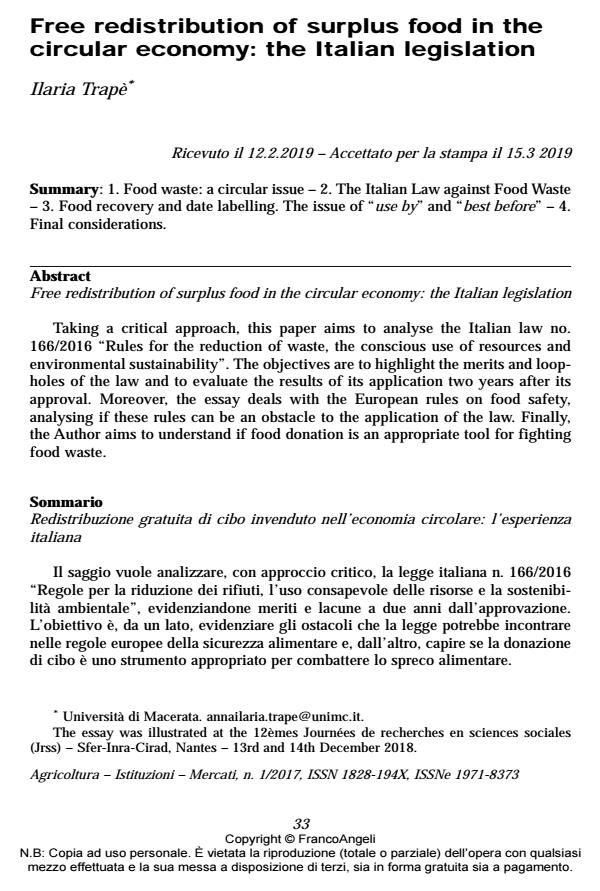Free redistribution of surplus food in the circular economy: the Italian legislation
Journal title AGRICOLTURA ISTITUZIONI MERCATI
Author/s Ilaria Trapè
Publishing Year 2019 Issue 2017/1
Language English Pages 32 P. 33-64 File size 108 KB
DOI 10.3280/AIM2017-001003
DOI is like a bar code for intellectual property: to have more infomation
click here
Below, you can see the article first page
If you want to buy this article in PDF format, you can do it, following the instructions to buy download credits

FrancoAngeli is member of Publishers International Linking Association, Inc (PILA), a not-for-profit association which run the CrossRef service enabling links to and from online scholarly content.
Taking a critical approach, this paper aims to analyse the Italian law no. 166/2016 "Rules for the reduction of waste, the conscious use of resources and environmental sustainability". The objectives are to highlight the merits and loopholes of the law and to evaluate the results of its application two years after its approval. Moreover, the essay deals with the European rules on food safety, analysing if these rules can be an obstacle to the application of the law. Finally, the Author aims to understand if food donation is an appropriate tool for fighting food waste.
Keywords: Food waste, food redistribution, Italian law, circular economy.
Ilaria Trapè, Free redistribution of surplus food in the circular economy: the Italian legislation in "AGRICOLTURA ISTITUZIONI MERCATI " 1/2017, pp 33-64, DOI: 10.3280/AIM2017-001003